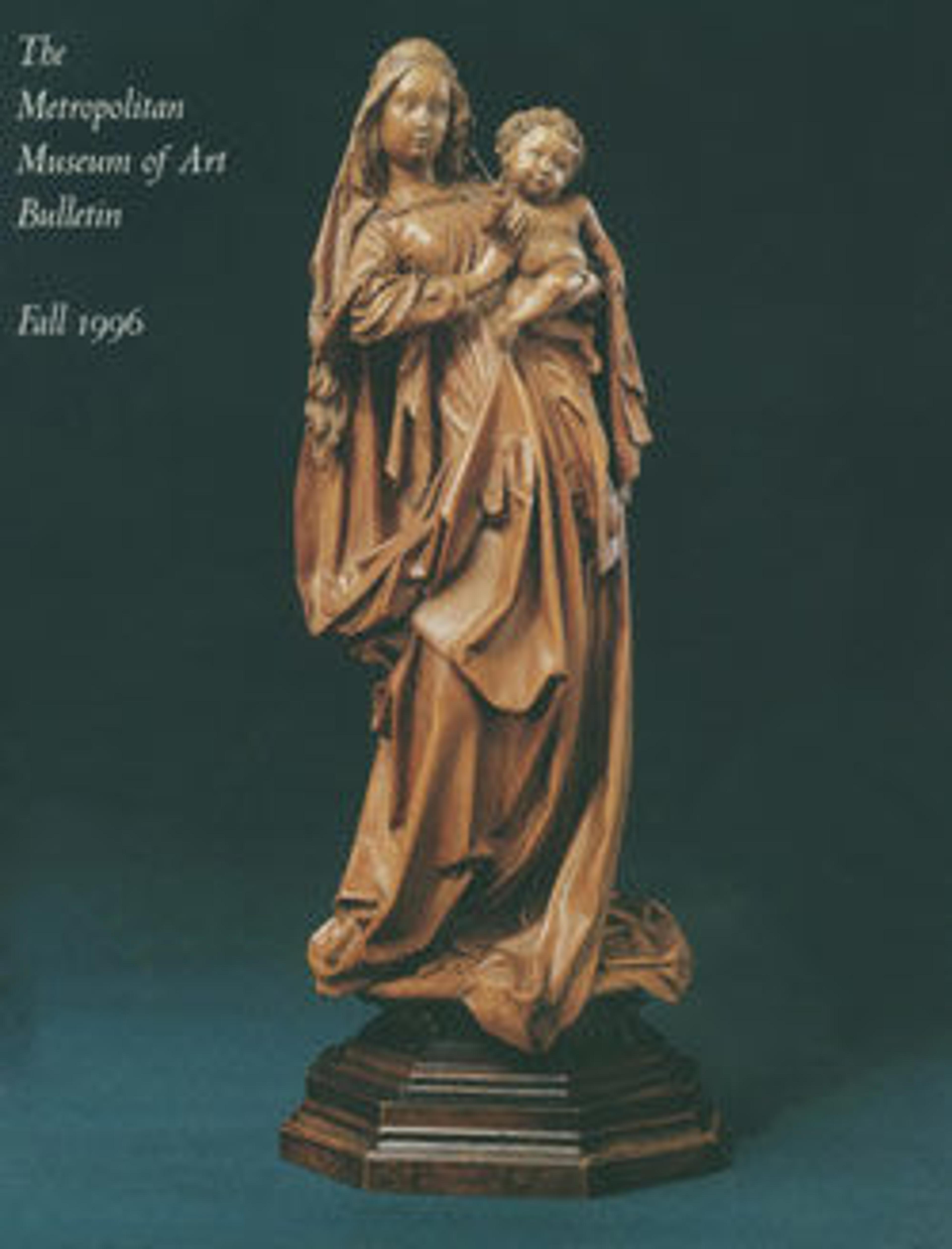Chinese Scholar Contemplating a Waterfall
This mountain landscape, in which the human presence is but a minor aspect of the vastness of nature, draws on an archetypal motif in East Asian art first formulated by Song-dynasty painters in the tenth century. Yet here the vision of nature is more foreboding than grand, and the minute humans seem more in peril than in harmony with their strangely animated environment. At the edge of a precipice in the left foreground a gentleman sits contemplating a distant waterfall, unaware of the improbably huge splash that arches up over him like a dragon. To the right a single traveler crosses a mountain ravine on a precarious bridge. He seems to be making his way toward the temple at far right, but the path disappears in light-filled mist. In the distance skeletal trees on barren mountaintops accentuate the forbidding nature of the vast landscape.
Soga Shōhaku was notorious for his eccentric treatment of conventional themes, and he and his followers created a number of similar compositions. He was one of a growing group of painters who worked in styles that challenged the orthodox manner of the dominant Kano school, which enjoyed the sponsorship of the Tokugawa shogunate. Because of the overall stiffness of the composition and the strained eccentricity of the signature style, it is safe to assume that this work was created by a follower rather than the master himself.
Soga Shōhaku was notorious for his eccentric treatment of conventional themes, and he and his followers created a number of similar compositions. He was one of a growing group of painters who worked in styles that challenged the orthodox manner of the dominant Kano school, which enjoyed the sponsorship of the Tokugawa shogunate. Because of the overall stiffness of the composition and the strained eccentricity of the signature style, it is safe to assume that this work was created by a follower rather than the master himself.
Artwork Details
- Title:Chinese Scholar Contemplating a Waterfall
- Artist:Follower of Soga Shōhaku (Japanese, 1730–1781)
- Period:Edo period (1615–1868)
- Date:late18th–early 19th century
- Culture:Japan
- Medium:Two-panel folding screen; ink and gold on paper
- Dimensions:Image: 61 3/4 x 68 3/8 in. (156.8 x 173.7 cm)
- Classification:Paintings
- Credit Line:Purchase, Barbara and William Karatz Gift and Rogers Fund, 1996
- Object Number:1996.104
- Curatorial Department: Asian Art
More Artwork
Research Resources
The Met provides unparalleled resources for research and welcomes an international community of students and scholars. The Met's Open Access API is where creators and researchers can connect to the The Met collection. Open Access data and public domain images are available for unrestricted commercial and noncommercial use without permission or fee.
To request images under copyright and other restrictions, please use this Image Request form.
Feedback
We continue to research and examine historical and cultural context for objects in The Met collection. If you have comments or questions about this object record, please contact us using the form below. The Museum looks forward to receiving your comments.
